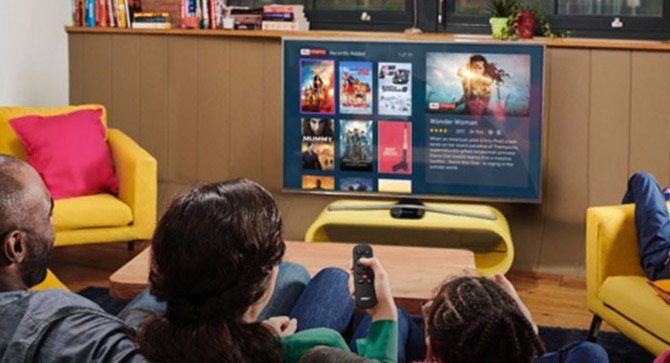Recapping CES: Television Still Rules
Not only is it the start of a new year but it is also the time of year when folks like us who are all about media, entertainment, technology and (ahem) gadgets get rather excited. Yes, you know what we’re talking about: the Consumer Electronics Show or CES.
This popular technology trade show is wrapping up today after three action-packed days of innovation, big ideas, and creativity in Las Vegas. In case you aren’t familiar with CES, here’s a short primer on this trade show and conference:
- Hosted by the Consumer Electronics Association (CEA) – a consumer electronics lobby group.
- Started in 1967.
- Used to be the trade show where companies made their big announcements. Now thanks to the Internet and mobile technology this has changed a bit.
- Great venue for smaller companies to showcase their ideas and innovations.
Attended by those in the technology business, investors, journalists, and other like-minded individuals.
Now, CES is a massive trade show with a wide range of exhibitors, conference sessions, and speakers. So we thought that it would be useful in the interest of the media and entertainment niche to highlight some of the events and innovations that caught our attention and of those attending.
Television Still Rules
As evidenced by the conference tracks at CES, television is not dead and is very much at the forefront of innovation and technology. We’ve written before about connected-TVs and smart TVs – and it seems that this technology is still very popular and being embraced by a range of companies.
Some of the ideas discussed around this latest television technology included how consumers are expecting and demanding an integrated and familiar television experience. This means that consumers want the same features and look-and-feel they can get from their computers. This speaks to the need for providers to really get on-board with a well-planned and integrated design – consumers need to feel comfortable enough with the technology to make the switch to a connected or smart TV. These demands and the technology capabilities really speak to how the television programs and viewing habits of today are nothing like they were two years ago.
Twitter, Facebook, Tumblr, Instagram, Pinterest – who would have ever thought these social media channels would and could have a direct impact on television? Well, it’s happening and at CES a conference session was devoted to discussing how social media is impacting television viewing habits and looking into a new term for many folks – “social TV”. It will be interesting to see how the entertainment and television industry learns to harness and use social media to its benefit. It is time to go beyond Tweets and Facebook updates that simply list television schedules or leak plot twists.
Content Still Matters
Remember those websites or apps that featured a nifty design and a few interesting features but really didn’t do or say much? It used to be that companies could get away with providing mediocre content if it was wrapped in something shiny… Well, the times are changing – as evidenced by sessions at CES that focused on the importance of content in building a brand or product.
In the conference session titled:TheNexGen Entertainment Home Experience: From the Smart & Connected TV to the Tablet, PVR, Smartphone and PC Experience, industry experts and others discussed how this range of technology is really emphasising one thing: the value of rich content. We’ve written about the importance of good solid content before, and this is something that simply is not going to change.
The bounty of technology and mobile technology means that in order to win over consumers and build a substantial subscriber base, companies must provide content that is well-written, produced and cohesive. Consumers want to watch a program on their television then visit the website on their computer for that program and then download the app to their tablet for the program – all the while getting a common look-and-feel with cohesive language and content. Of course embedded in all this consumers are demanding the latest in video technology, HDTV, and social connectivity.
Mobile Demands
Consumers want it and they want it wherever they are. Therefore, media and entertainment companies must learn how to take their products and repackage them to meet the mobile consumer. This means magazines need to focus on their digital editions, whilst television producers need to think about a YouTube channel that gives subscribers premium content. This means that newspapers need to understand the reading habits of those using their smartphone to read the daily news.
All of this speaks to a shift in market opportunities for the media and entertainment space – companies are no longer limited to magazine subscriptions, newspaper home delivery and standard cable packages. A number of conference sessions and innovations at CES reinforced how vital it is for companies to think about how consumers are using and accessing their products.
CES Conclusions
Of course this is just a very brief snapshot of the highlights of CES, but from our perspective it does something very important: it reinforces how vital it is for those of us in the media and entertainment industry to stay one step ahead of consumer demands.
Yes, easier said than done. But if you can listen to and interact with your customers (think Twitter and Facebook) then you have the opportunity to innovate in the right direction. The technology space is moving at a very quick pace and this is not the time to get left behind. Think about your existing products and services and how you’re going to package and deliver them to meet the new demands of television and mobile technology.
 us
us 






 Posted by MPP Global on
Posted by MPP Global on


